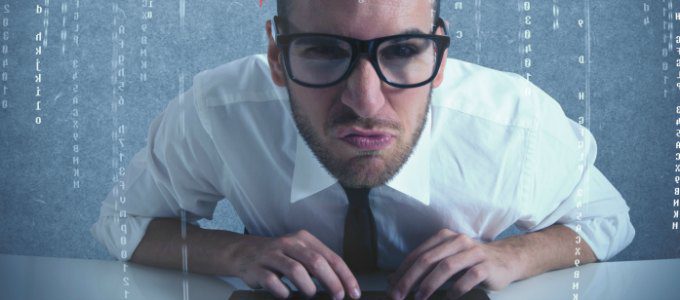
New facial recognition software could mean more integrity and personalization for e-learning, even if it comes with a side of creepy.
by Kate Everson
July 10, 2014
The anonymity of e-learning may be coming to an end.
Facial recognition software developer KeyLemon has released a new program that applies its product to online education. Not only will it identify users when they first log into a program, it will confirm whether they’re the one taking the test. It also tracks eye movement to make sure learners are paying attention to a lecture instead of just half-heartedly listening while playing a gripping game of Tetris. Think of it as giving e-learning instructors the ability to look out at a sea of faces in a classroom instead of just a list of usernames on their screens.
For learning leaders, this development means they can add some integrity to online development programs that are plagued by plagiarism and cheating. It also means they can make e-learning more personal and responsive by giving the administrator a firmer grasp on what students are paying attention to during lecture.
But facial recognition that watches a learner’s every move, even eye motion, through a pinhole in the top of his or her laptop sounds intrusive, right? At the very least it sounds like another form of Big Brother butting into our personal lives. A majority of e-learning takes place in our own homes, after all.
It already can be hard to get employees enthused about learning programs, and now throw in the additional paranoia that they’re being watched by what sounds like some eye-in-the-sky webcam program. In a world where the most popular villain isn’t a foreign power but our own surveillance systems — thanks, “Person of Interest” — it seems ironic a company should be touting such a seemingly intrusive program.
I brought this idea up to Anthony Gioeli, KeyLemon’s vice president of sales and marketing. He explained no one outside his company can construct the data it collects from webcams into actual images, and that facial recognition's use in e-learning has nothing to do with monitoring personal lives. Instead, it's the equivalent of an access card for the student, much like a password that assures they're the ones accessing the content.
“The integrity of e-learning and online education programs requires that you verify the identity of the student,” Gioeli said. Thanks to facial recognition, students and administrators who once had to hire a proctor or gather in a specific place for testing can now do it from the comfort of their own desktop without disrupting their workflow.
But facial recognition’s application to e-learning goes beyond proctoring. Through the eye motion sensor used to make sure a student is paying attention, KeyLemon’s program alerts administrators if users are looking at a particular part of the screen. Is it because they’re confused? Is something wrong with the slide? Or did you as the lecturer derail your own presentation by including that mesmerizing GIF of a skateboarder falling on his face? Instructors get real-time feedback on their content, rather than hope their students are listening instead of leveling up on “Candy Crush Saga.”
Which, let’s face it, might not happen as often if students know they’re being watched. Self-fulfilling prophecy? Maybe. The new thing in e-learning? Only time will tell.



